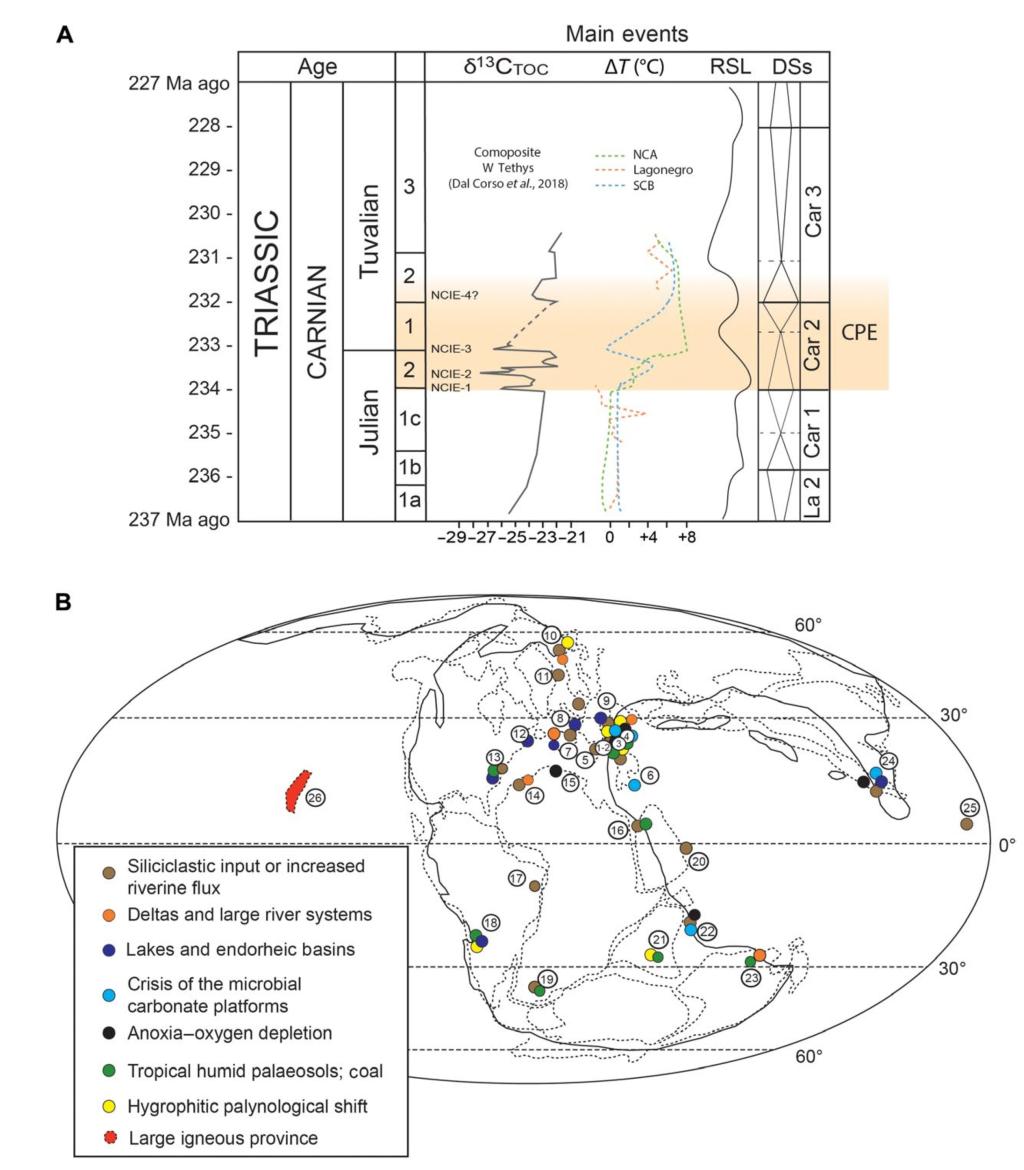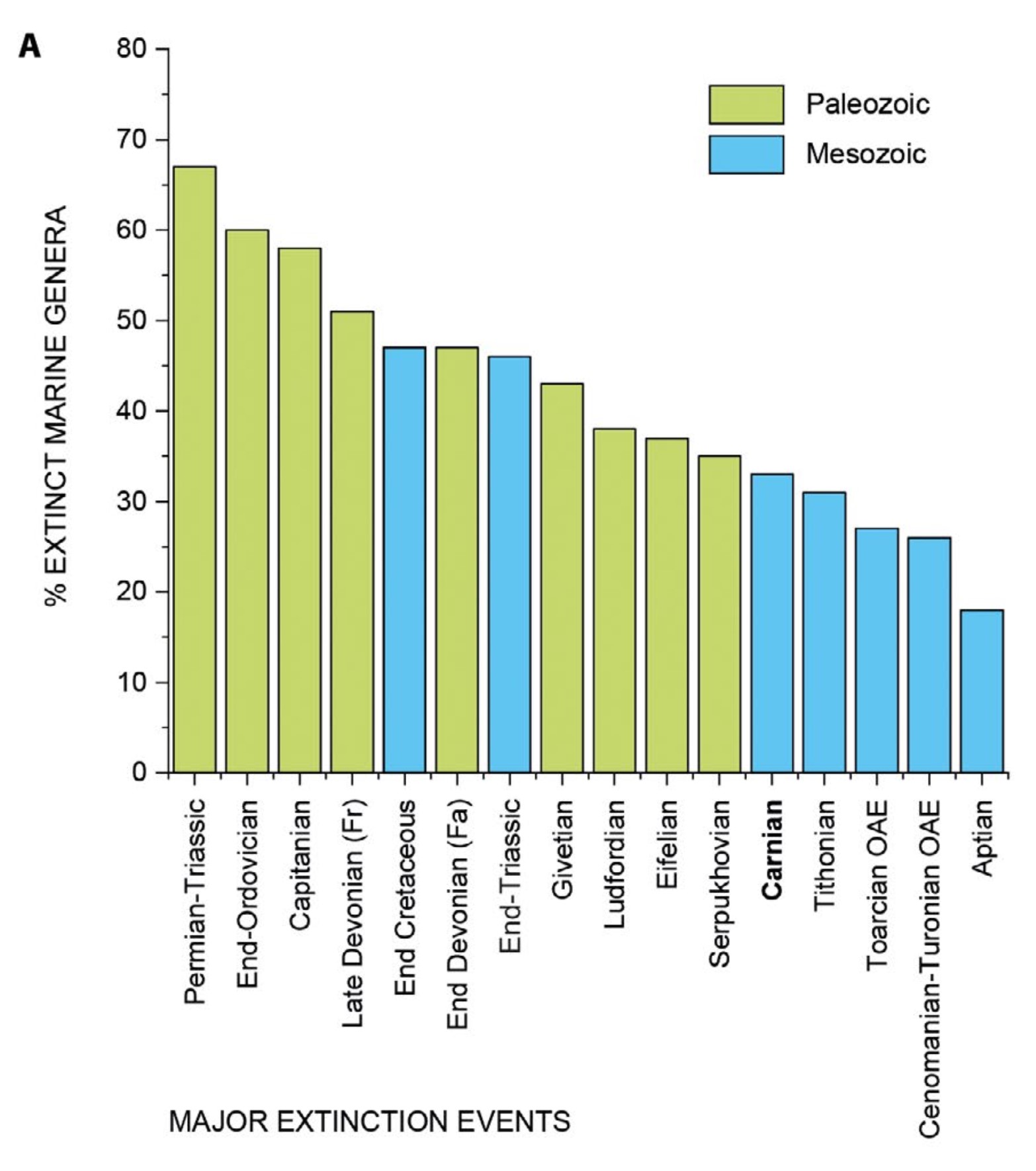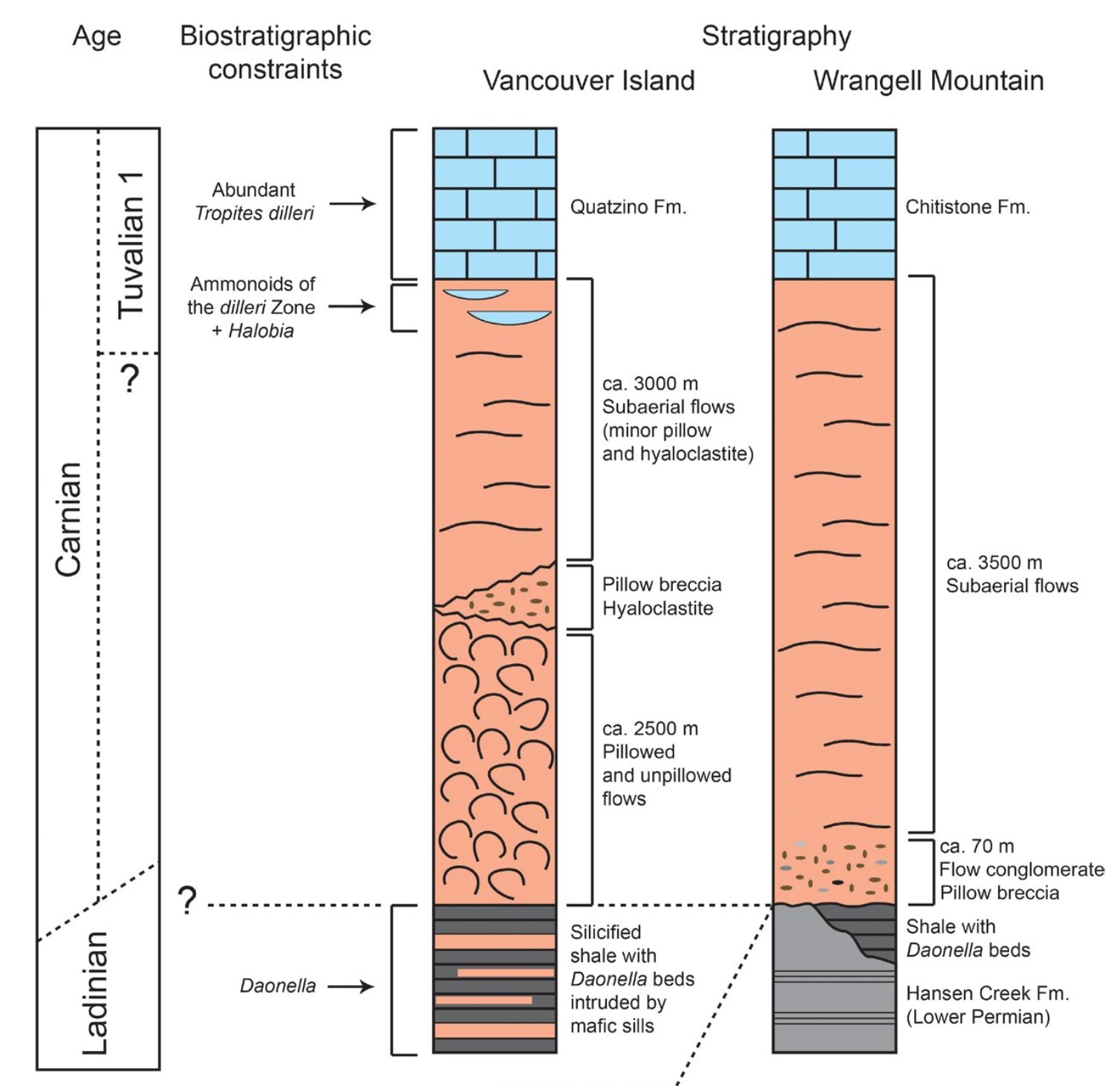Abstract
The Carnian Pluvial Episode (Late Triassic) was a time of global environmental changes and possibly substantial coeval volcanism. The extent of the biological turnover in marine and terrestrial ecosystems is not well understood. Here, we present a meta-analysis of fossil data that suggests a substantial reduction in generic and species richness and the disappearance of 33% of marine genera. This crisis triggered major radiations. In the sea, the rise of the first scleractinian reefs and rock-forming calcareous nannofossils points to substantial changes in ocean chemistry. On land, there were major diversifications and originations of conifers, insects, dinosaurs, crocodiles, lizards, turtles, and mammals. Although there is uncertainty on the precise age of some of the recorded biological changes, these observations indicate that the Carnian Pluvial Episode was linked to a major extinction event and might have been the trigger of the spectacular radiation of many key groups that dominate modern ecosystems.

FIG. 1 Environmental and geochemical changes of the CPE.
(A) Age of the CPE, composite organic carbon-isotope curve through the Carnian (2), temperature changes reconstructed from oxygen-isotope data from conodont apatite (7), relative sea level changes (RSL), and depositional sequences (DSs). The gap in data in the lower Tuvalian is centered on a global sea level low, implying that most shallow water successions have a hiatus there. The reader should refer to (2) and (7) for a detailed discussion of the δ13C and temperature composite schematic records. NCA, Northern Calcareous Alps; SCB, South China Block.
(B) Palaeogeography during the Carnian and location of the data indicating environmental changes during the CPE [modified after (2)]. Localities: (1) Dolomites (Italy), (2) Julian Alps (Italy), (3) Transdanubian Range (Hungary), (4) Northern Calcareous Alps (Austria), (5) Lagonegro Basin (Italy), (6) Antalya (Turkey), (7) Iberia (Spain), (8) United Kingdom, (9) Central European Basin, (10) Barents sea, (11) Jameson Land, (12) Fundy Basin (Canada), (13) Richmond and Taylorsville basins (United States), (14) Essaouira Basin, (15) Jeffara Basin, (16) Levant Basin (Jordan, Israel), (17) Brasil, (18) Ishigualasto and Cujo basins (Argentina), (19) Karoo Basin (South Africa), (20) Oman, (21) Rewa Basin (India), (22) Spiti (India), (23) Carnarvon Basin (Australia), (24) Nanpanjiang Basin (China), (25) Panthalassa (Japan), and (26) Wrangellia and Panthalassa (Canada and United States).

FIG. 2 Marine extinctions during the CPE.
(A) Comparison of extinction rates of all marine genera during the CPE with those of major Phanerozoic mass extinction events [from figure 2 of (42)]. The data compilation reveals that the CPE was a severe mass extinction, bigger than the well-known early Jurassic and Cretaceous extinctions.

FIG. 3 Terrestrial extinctions and originations.
Major biological changes among vertebrates, plants, and insects, discussed in the paper, in relation to the C-isotope and T variations recorded during the Carnian (Fig. 1). The most notable pattern that can be observed is a major diversification event that affected many groups in the late Carnian (Tuvalian), i.e., just after the main negative C-isotope excursions that mark the CPE. Most of the amber, which indicates stressed conditions, is dated to the latest Julian when biostratigraphic data allow a good age control (88, 89). Data are summarized from the following literature and the references therein. Trackmaker assemblage variations from (10) are as follows. Dinosauria: red star, detrital zircon age for Santa Maria Formation (Brazil); green star, U-Pb age of Ishigualasto fauna (34, 68, 115, 116). Dycinodonts: (117, 118). Crocodilomorpha: (70, 71). Phytosaurs: (119, 120). Rhynchocephalia: (73, 74). Mammals: (80–82). Turtles: (75, 77–79). Plants: (83). Amber: (88). Insects: (91–93). For the δ13C and T records, refer to Fig. 1. Stutt. Fm, Stuttgart Formation; EU, Europe; Ger, Germany.

FIG. 4 Wrangellia LIP.
Stratigraphy of the Wrangellian succession in Vancouver Island (Canada) and Wrangell Mountain (Alaska, USA) reconstructed from (102). The age of the end of Wrangellia volcanism can be solidly fixed with ammonoid biostratigraphy to the early Tuvalian, while the onset could have a late Ladinian age given the presence of Daonella bivalves below the basalt pile (see discussion in the main text). Fm., Formation.